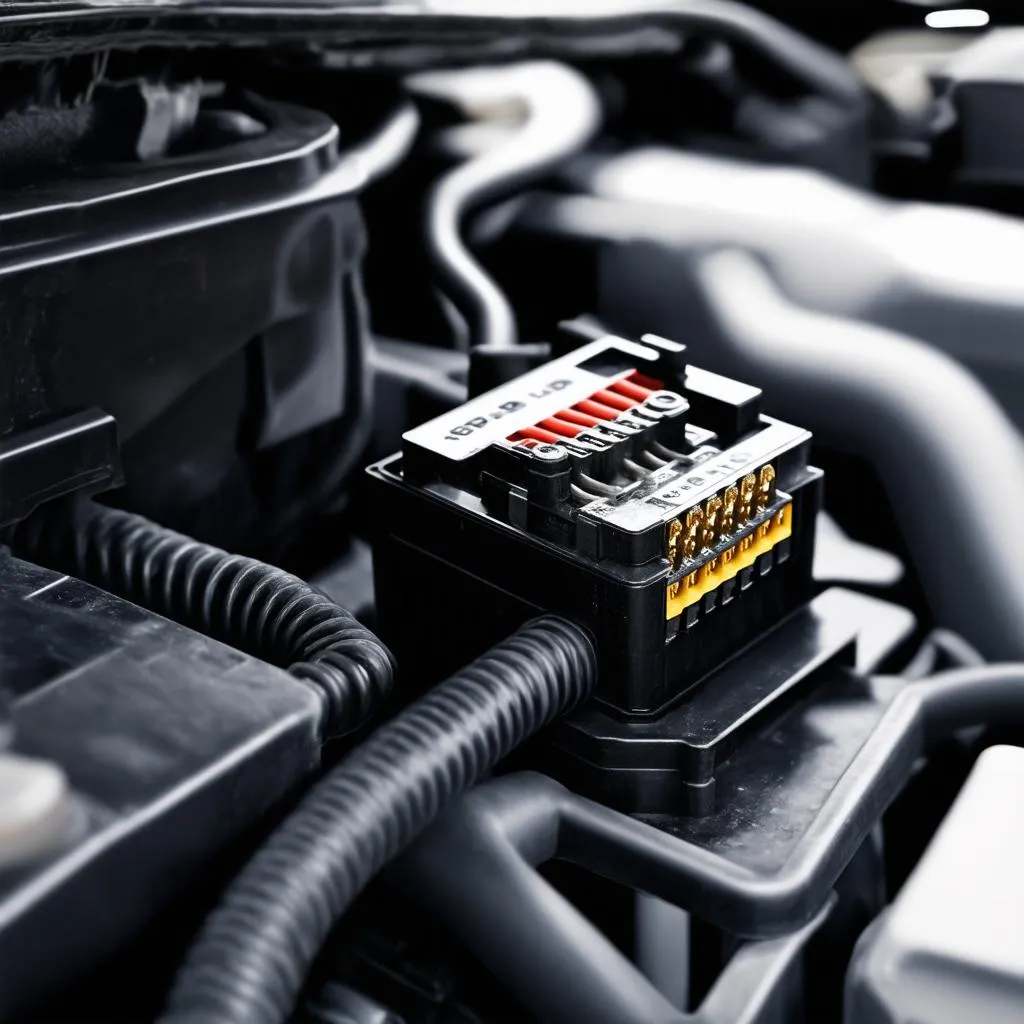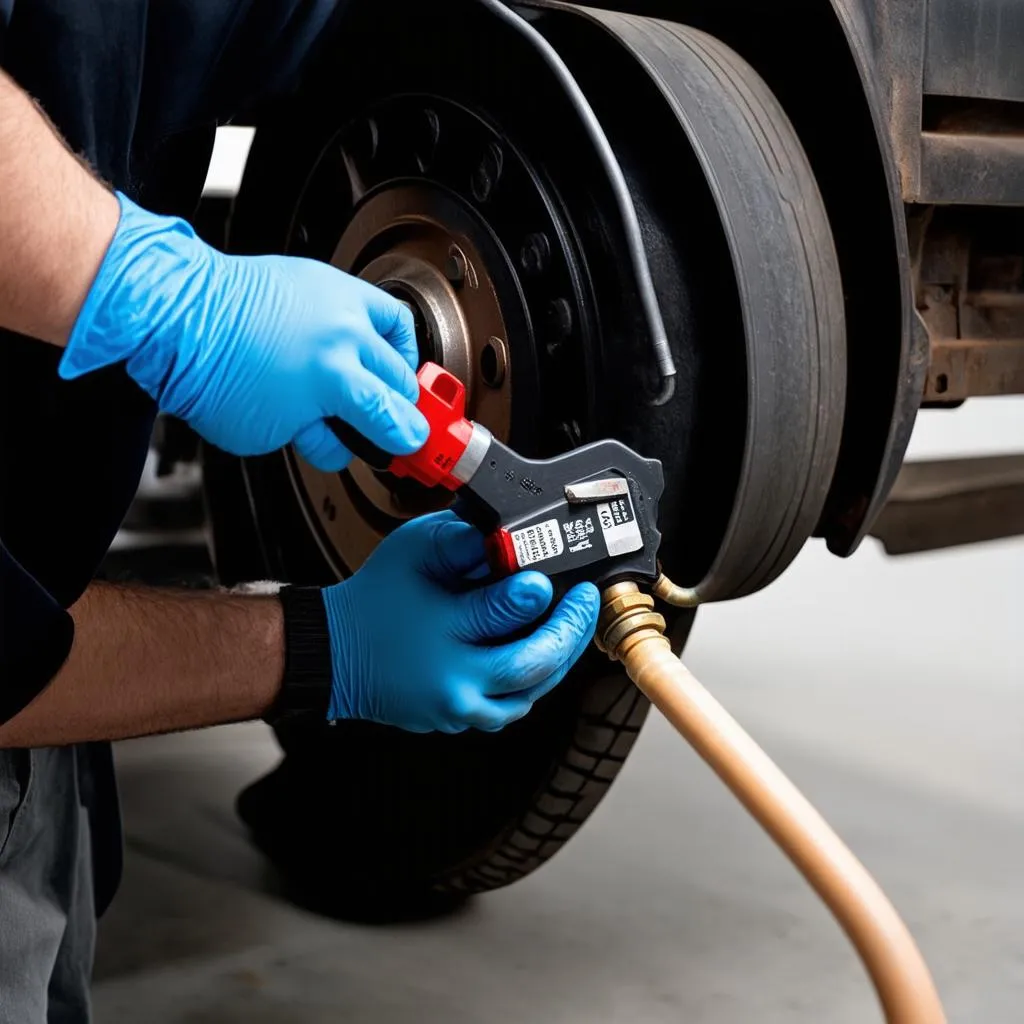Ever felt that sinking feeling when your brake pedal hits the floor, and you’re left wondering what’s wrong with your car? It could be your ABS module acting up, and you’re in desperate need of a bleed. But what if you don’t have a fancy scan tool at your disposal? Can you still bleed your ABS module without it? Buckle up, because we’re diving deep into the world of ABS modules, bleeding brakes, and whether it’s possible to tackle this job without a scan tool.
Decoding the Mystery: What Does “Bleeding the ABS Module” Even Mean?
Before we get our hands dirty (figuratively, of course), let’s demystify what “bleeding the ABS module” actually means. Imagine your car’s braking system as a network of pipes and chambers filled with brake fluid. This fluid is the lifeblood of your brakes, transmitting the force from your foot on the pedal to the wheels, bringing your car to a halt.
Now, air bubbles are the nemesis of this system. They compress under pressure, making your brake pedal feel spongy and reducing your braking power – a recipe for disaster!
“Bleeding” your brakes involves flushing out these pesky air bubbles, ensuring your brake fluid is pure and your braking system is in tip-top shape.
But here’s the catch with ABS modules. These intelligent systems have intricate valves and chambers that need a little extra coaxing to release trapped air. This is where scan tools often come into play – they communicate with the ABS module, activating its components and making the bleeding process more efficient.
The Scan Tool Dilemma: Can You DIY Without It?
So, you’re probably wondering, “Can I bleed my ABS module without a scan tool?” Well, the answer is a bit like navigating a tricky intersection – it depends.
While traditional brake bleeding methods might work for some vehicles, others require a scan tool to cycle through the ABS module’s valves and purge any stubborn air pockets.
Here’s the deal:
- Older Vehicles: Some older cars might allow you to bleed the ABS module using the good old-fashioned manual methods – think pumping the brake pedal and bleeding each wheel. However, this isn’t guaranteed, and it’s always best to consult your vehicle’s service manual for specific instructions.
- Newer Vehicles: Modern cars, especially those with advanced electronic stability control systems, often require a scan tool for a successful ABS module bleed. This is because the scan tool can access and command specific functions within the ABS module that are inaccessible otherwise.
 Car ABS Module
Car ABS Module
Navigating the Road Ahead: What Should You Do?
If you’re facing a spongy brake pedal and suspect air in your ABS module, here’s the best course of action:
- Consult Your Vehicle’s Service Manual: Your service manual is your bible! It contains specific instructions for your car model, including whether a scan tool is necessary for bleeding the ABS module.
- Consider the Risks: Attempting to bleed an ABS module without a scan tool when one is required can lead to incomplete bleeding, reduced braking performance, and potential damage to your ABS system.
- Seek Professional Help: If you’re unsure or uncomfortable tackling this task yourself, it’s always best to consult a qualified mechanic. They have the expertise, experience, and necessary tools to diagnose and address any brake-related issues safely and effectively.
Remember, your car’s braking system is critical for your safety. While DIY repairs can be rewarding, knowing your limits and prioritizing safety is paramount.
FAQs: Your ABS Bleeding Questions, Answered!
Q: Can I damage my ABS module by bleeding it without a scan tool?
A: While it’s possible to bleed some older ABS systems without a scan tool, attempting this on a vehicle that requires one can potentially damage the module or lead to incomplete bleeding.
Q: How do I know if my ABS module needs bleeding?
A: A spongy brake pedal, longer stopping distances, and the ABS warning light illuminating on your dashboard are all potential signs of air in your ABS module.
Q: How often should I bleed my ABS module?
A: While there’s no set schedule, it’s a good practice to have your brake system inspected and flushed, including the ABS module, every 2-3 years or as recommended by your vehicle manufacturer.
Q: Can I use any brake fluid for bleeding my ABS module?
A: Always refer to your owner’s manual for the recommended brake fluid type and specification. Using the wrong fluid can damage your brake system components.
 Mechanic Bleeding Brakes
Mechanic Bleeding Brakes
Need More Help? Diag XCar is Here for You!
We understand that dealing with car troubles can be overwhelming. If you’re unsure about bleeding your ABS module, have questions about your car’s braking system, or need assistance with any other automotive issue, don’t hesitate to reach out to us!
At Diag XCar, we’re a team of passionate automotive enthusiasts dedicated to providing you with the information and support you need to keep your car running smoothly.
Contact us today via WhatsApp at +84767531508. Our team of experts is available 24/7 to assist you with any questions or concerns.
Looking for more helpful tips and tricks? Check out these related articles:
Safe travels!


